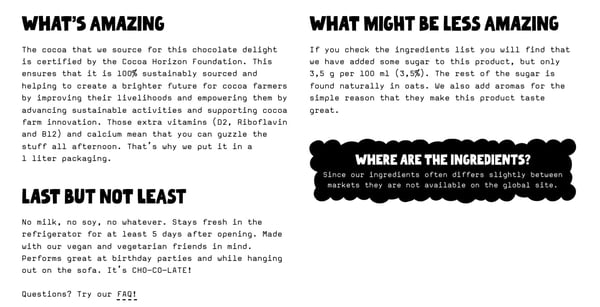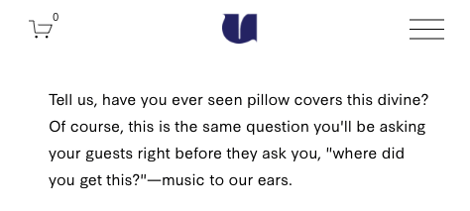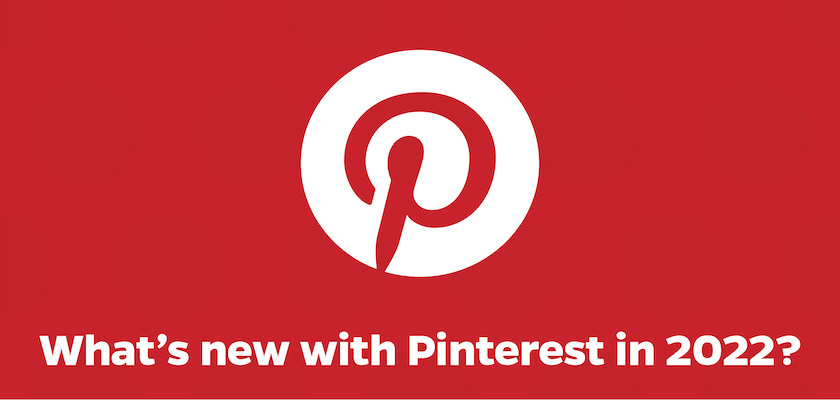11 Website Copywriting Tips to Increase Conversions in 2022
A 2022 State of Content Marketing report by SEMrush revealed that 40% of brands surveyed say they outsource copywriting. If you fall in the 60% and want to improve your copywriting skills, we’re here to help.

A 2022 State of Content Marketing report by SEMrush revealed that 40% of brands surveyed say they outsource copywriting. If you fall in the 60% and want to improve your copywriting skills, we’re here to help. Web copy can make the difference between a visitor and a lead. It plays an integral role for consumers at every stage of the buying cycle, from awareness to decision making and advocacy. Below, you’ll find tips on how to write compelling copy. Website copywriting is the process of writing content – think blog posts, landing pages, product pages – to prompt a desired action on a website. Well-crafted website copy can turn visitors into leads and leads into customers. Most marketers can identify poor web copy when they see it. Why? Because poor web copy doesn’t read smoothly, stir emotions, influence behaviors, or make explicit calls to action. It feels purposeless — and that’s the exact opposite of what marketing is meant to accomplish. Yet, web copywriting is a strategy that sometimes falls by the wayside, often overlooked for other website elements like SEO, design, and functionality. The number one tip for website copywriting is to know who will be reading it. If you don’t have a reader in mind, how will you know which words and tone will resonate with them best? As a writer myself, I am constantly aware of the user and their needs. It’s my north star when writing posts. How did I get to know them? Through user personas and data. User personas will tell you who is the average reader landing on my article, what their pain points and challenges are, along with their goals. Data will give you insight into what strategies have performed well with that audience and which ones to stay away from. With both, you’ll gain a deeper understanding of your audience, which will allow you to write copy that will engage and compel your user to take action. You’ve been tasked with writing a particular piece of copy on the company website. Once you understand your audience, one HubSpot marketer recommends asking yourself, "who cares?" "If I can't answer that, then I can't expect anyone to read it," said Curtis del Principe, SEO content writer at HubSpot. "Once I have an idea of who cares (and why), then I have an angle and a through line to guide my writing." Too often, we write without diving into the purpose of the content. What will the reader gain from reading this? What do I want them to do after reading this? Why should they care about this content? Answering these questions is key to writing valuable content. SEMrush recently analyzed over 23,561 texts ranking in Google’s top 10 results. They found that the lowest-scoring texts had two things in common: They were too long or too complex. In fact, 41% of low-scoring texts used words that were too complex. Take this as your sign to skip the jargon and the fancy words – just get straight to the point. Here are a few examples: When in doubt, keep it simple. Nobel prize winner and writer William Faulkner said it best: Kill your darlings. As writers, it’s so easy to get carried away with our words. In marketing, using excessive language can have the exact opposite effect. AJ Beltis, senior marketing manager at HubSpot responsible for blog leads, calls himself a wordy writer. So, he focuses on brevity. "The first time I write something, I get all of my thoughts down in writing. Then, I'll look it over again, and ask myself, "how can I say this more concisely?" he says. "I find that I'm able to get my point across clearer and faster as a result." Madison Z. Vettorino echoes this by encouraging brands to keep their copy "bite-sized" without sacrificing accuracy and authenticity. "Every word and sentence should connect to that core idea. If it doesn't, it’s unnecessary and should be deleted," she says. "When it comes to copywriting, the ability to keep it brief yet impactful is a superpower." This one seems obvious but can be the biggest hurdle for copywriters. We often think that our readers use language that’s more advanced and elevated than our own. But the truth is, many readers want to be spoken to like a friend. "It's more relatable and conversational, and the reader gets a little taste of your personality," says HubSpot staff writer Alana Chinn. "Plus, it's a lot easier to write about complex topics if you think about how you'd explain them to a friend or family member in real life." When you’ve been working on something for a while, it becomes hard to spot errors. To combat this, take a lot of time between edits, says HubSpot staff writer Madhu Murali. "This gives me a fresh perspective on the piece each time I read it and get a better idea of a reader's POV," he says. When rereading, you’ll likely spot clunky sentences, awkward phrasing, and grammar mistakes more easily. This approach can turn good copy into great copy. No matter how good your copy is, if it’s long and bulky, you’re likely to lose your reader’s attention. Eye-tracking studies reveal that website visitors often skim articles instead of reading every sentence. As such, break up your paragraphs – especially if your traffic mostly comes from mobile devices. This can be also done through subheaders, bullet points, and images, as shown in the example below. I once landed on a website and read so many buzzwords that I had no idea what they were saying. I spent a few minutes re-reading sentences to make sense of them but got nowhere. I got discouraged and exited the site. When using buzzwords, the goal is usually to use words most likely to stand out to readers. Sometimes, people get carried away a bit and you end up with a convoluted sentence with no substance. In this case, less is more. So, keep your copy straightforward and jargon-free – unless you have data to prove that it works for your audience. As straightforward as this seems, many companies fail to apply this principle to their web copy. They focus on what their company does and what products they offer, instead of writing from the reader’s perspective. What can they gain from using your software? Start from there. So, instead of saying "We do inbound marketing," try something like "Increase your web traffic and leads with engaging content," which immediately outlines the benefits. Microcopy refers to short text on a website, such as a call to action and the label on a form field. the text that doesn’t seem to come up in conversation very often, but it’s little details like these that can make or break the user experience on your website. Easier said than done, right? We know. There are a few surefire ways to write an engaging CTA: It’s always helpful seeing what your competitors are doing, as it can inform your own strategy. Copywriting is no different. Review your direct competitors’ websites and take note of their copy. What’s their tone? How do they present their products and services to consumers? What CTAs do they use (and on which pages) to drive traffic through to the bottom of the funnel? I’m not suggesting that you should adopt their copywriting approach but it doesn’t hurt to know their take. Now that you have all these tips, you can step your copywriting game up and increase those conversions.What is website copywriting?
13 Website Copywriting Tips for Increasing Conversions
1. Know your audience.
2. Figure out the why.

3. Complexity kills readability.
4. Be concise.

5. Write how you speak.

6. Take breaks between drafts.
7. Break up the copy.

8. Avoid overuse of buzzwords.
9. Focus on benefits.
10. Don’t overlook microcopy.

11. Check out the competition.
Originally published Jun 6, 2022 7:00:00 AM, updated June 06 2022

 Astrong
Astrong ![150+ Content Creation Templates [Free Kit]](https://no-cache.hubspot.com/cta/default/53/5478fa12-4cc3-4140-ba96-bc103eeb873e.png)

































